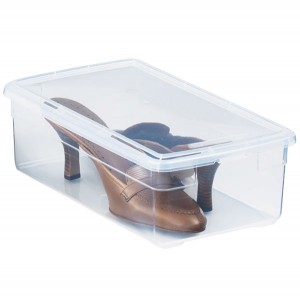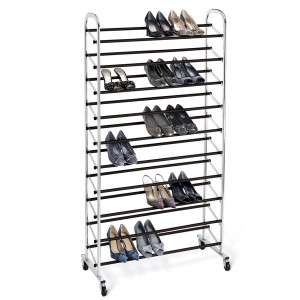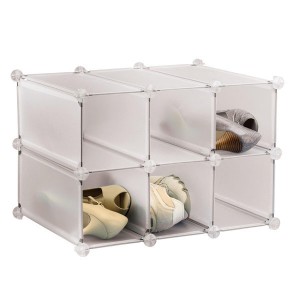We often receive questions about the best way to organize and store shoes. While there is no ‘right’ way, there are certain steps that you can take to ensure success when designing your shoe organization strategy.
First, take an assessment of your shoe collection and storage space and ask yourself the following questions. 
- How many pairs do you have?
- What types do you have (heels, flip-flops, flats, large or small sizes)?
- How many more do you think you will acquire in the near future?
- Do you have a large space or small space for storage?
- Is there a dedicated shoe area or will storage need to be creative?
- Do you have space for seasonal shoe storage or does everything need to fit in one place?
At this time you should also determine if any shoes can or will be purged before implementation of the new organization strategy. Once you have thoroughly assessed the situation, take a look at our list of favorite storage solutions below and select one that will work for your collection and space.
Our Favorite Shoe Storage Solutions:
- The modular shoe organizing system can be scaled up or down depending on needs.

- Clear shoe boxes protect shoes from dust and work well on built-in shoe shelves. For easy shoe identification, consider taping a photo of the shoes to the front of the box.
- The 30 Pair Overdoor Organizer is great for those with limited space. Place on the back of your closet or bathroom door for discrete and space-saving storage.
- Shoe cubbies are excellent for closets that only have room below the hanging racks.
- Under-bed chests can be used to store out-of-season shoes in an efficient manner.
- The 10 tier (50 pair) rolling rack may be a good solution for those with larger collections and amounts of space.
- Boot holders are designed for hanging closet rod storage and help with shape maintenance.

No matter which storage solution you purchase, it’s important to take the time to arrange your shoes in a manner that promotes function and organization. Ideally, shoes that are worn most often should be stored in the most accessible space, front and center. Shoes that are seasonal or rarely worn should be housed in the less accessible spots (back, sides, high, low). If possible, group like shoes together. For example, all flip flops and sandals are on one shelf and all heels are on another. Finally, take care to protect your collection by utilizing accessories like cedar shoe trees, which help to retain shape and minimize odor.
Happy Organizing!
TWOW

